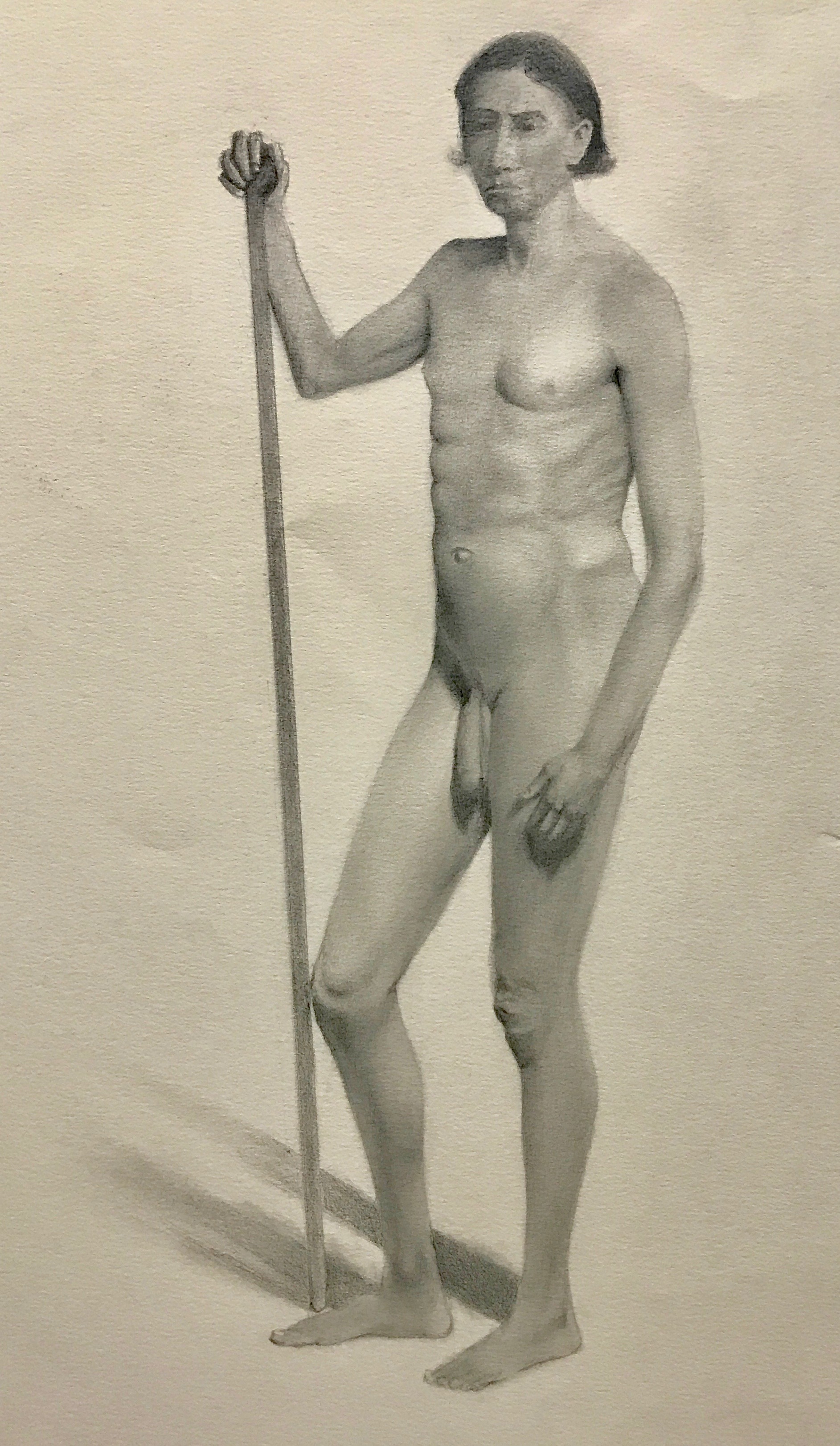This week saw the end of my time at the Angel Academy of Art in Florence. It also saw the arrival of my daughters Hannah and Nora and Hannah’s husband Brian Romans. In the afternoons I spent time showing them Florence. I was happy they could enjoy the city and its surrounding area (they went to Sienna, Pisa and San Gimignano on a day-trip). It was a very sad moment when they left. I miss them, and their sister, everyday.
This was my final week at The Angel Academy of Art. I will miss the students who befriended me and the teachers who took an interest in helping me with learning. I certainly did learn what I did not know. I discovered how much transformation is needed for this to be a life commitment. I know that I will have to narrow my focus and interests if I am to get better at this. As this likely last chapter of my life, this makes perfect sense—focusing, limiting distractions and ignoring the sirens of the world.
I spent the mornings in my final week completing the 3-week graphite figure drawing. The figure was a very tall and slender Italian man whose every muscle and boney landmark was exposed. This made it both interesting and very difficult to draw. The pose position I was assigned meant that I had very few shadow shapes—meaning very few variations of the dark. This resulted in a long and slow process of delicately rending the lights.
What I learned:
- While the muscles were visible and pronounced, they continually shifted shape based on breathing and subtle shift in stance. This required me to “fix” one position—relative to the other muscles—and continue to render what I remembered, not what I saw.
- I still have miles to go before I improve my accuracy in the face. I have conquered, at least for a beginners level, the body. However, my facial rendering does not accurately represent the models face. This will be subject of my next set of classes next week and in the fall.
- Once I have established the overall shapes, I need to keep reminding myself to remember the big-form modeling, the fall of the light and, most importantly, the relative nature of the light across the whole form.
- Once the major shadow shapes and body forms are established and the rendering of the lights begin, it is crucial to only draw a small amount before stepping back and checking the shape and rendering in overall context. It is easy to get drawn into rendering one part only to discover that it is “over rendered.” Removing graphite is more difficult that putting it down correctly, and slowly, in the first place.
- The careful and soft rendering of the muscles takes patience. At first, the shadows of mu horizontal stomach muscles were “lines.” I had to use a 2H and 4H pencil to gently soften and transition these to get them to look more accurate.



Recent Comments